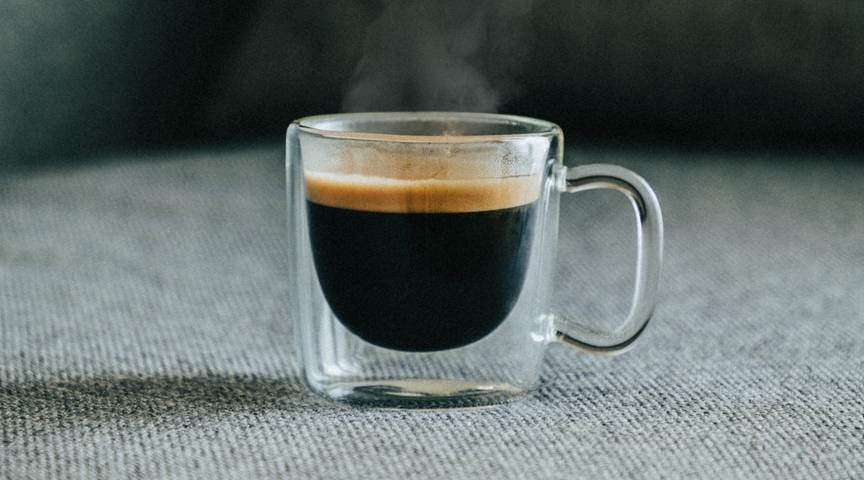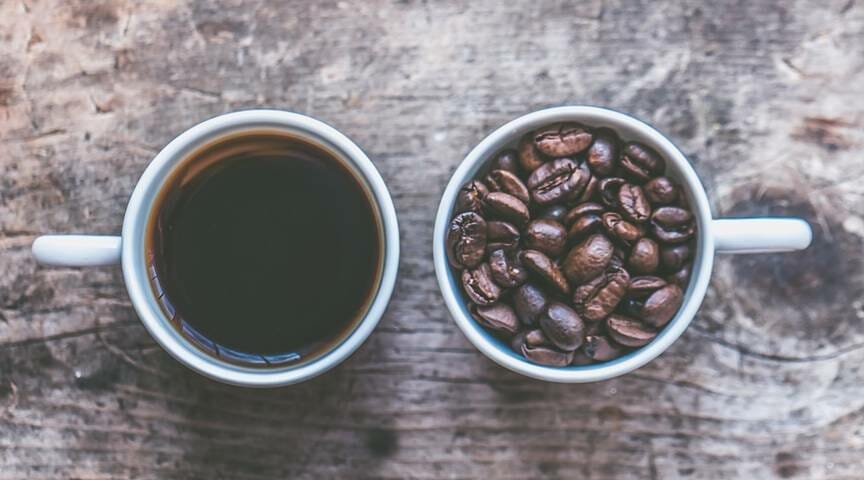Coffee and espresso are two different types of beverages prepared with different beans. Espresso has a rich flavor and slightly higher caffeine content than coffee. Besides, espresso machines’ mechanisms are not similar to coffee makers.
Theoretically, both are coffee grounds. However, it is a well-known fact that different types of beans affect the taste of coffee. So, can you use coffee beans for espresso?
Read the entire post to find the answer.
Here Is the Direct Answer
Beyond any question, coffee beans can be used for espresso. But, you must understand the characteristic of the drink which makes it so special. Espresso is a unique drink that needs a special grind and roast to prepare.
The drink has a strong yet smooth flavor with just a hint of bitterness. A perfect espresso should have an appetizing and soft mouthfeel, not harsh. You cannot reach the desired taste if you use regular coffee for espresso. Instead, you will get a poor flavor and pungent mouthfeel.

Can You Use Espresso Grounds in a Coffee Maker?
Since we are trying to discover coffee beans’ compatibility with espresso, we should also learn the opposite. The truth is, yes. You can use espresso beans in a coffee maker. However, there are a few things to keep in mind when doing so.
Espresso grounds are much more densely packed than regular coffee beans. So, you have to use them less than regular coffee grounds. You will be able to brew a delicious cup of coffee using espresso grounds in your coffee maker after a few trials and errors. As a first attempt, you can start by using about half the amount of espresso grounds compared with the regular coffee ground.
What Are the Qualities of a Perfect Espresso?
Espresso is characterized by its strong, rich flavor and thick, creamy texture. Crema, or espresso foam, is one of the most important qualities of a perfect espresso. A good crema should be thick, golden-brown in color, and have a uniform texture.
Aroma and flavor are also vital factors in assessing espresso quality. The perfect espresso should have a pleasing aroma and a well-balanced flavor that is not too bitter or sour. Besides, a serious aspect of the perfect espresso is its smooth, pleasant aftertaste.
Is Espresso a Different Type of Coffee Bean?

A false fact that thousands of people believe – espresso is a special bean. The truth is that no coffee beans are grown in the world named espresso. Espresso is simply a term used to describe a style of coffee prepared using specific brewing methods.
The beans used in this brewing can be either Robusta or Arabica. However, espresso brewing needs special coffee beans that are darker and have been roasted for a longer period than regular coffee beans.
What Is the Key Difference between Espresso and Coffee Beans?
The major difference between espresso and regular coffee beans is their roasting and grinding process. Espresso beans are roasted until they develop an oily and shiny exterior. On the other hand, regular coffee beans are roasted until the beans are dry and toasty-looking.
The espresso grind must be finer to extract the desired flavor and crema. So, dark roasted beans are typically ground multiple times to get the desired consistency, whereas regular coffee beans are ground only once. That’s why espresso roast and grind results in a more flavorful and creamy cup of beverage.
What Will Happen If You Brew Coffee Beans in an Espresso Machine?
You will see negative effects in the brewing process in the case of using coffee grounds in an espresso machine. Espresso machines are designed for high-pressure brewing, which requires a finer grind to function properly. If you use a medium or coarse grind coffee in an espresso machine, it will fail to brew quality espresso.
The coffee grounds will get stuck in the filter basket, and the water will not be able to extract all of the coffee’s oils and flavors. As a result, you will get a weak and watery espresso.
Is Arabica or Robusta Better for Espresso?
Arabica and Robusta grounds can both be used for espresso. Arabica is known for its subtle aroma, while Robusta is known for its rich crema.
Some people, even brands like Starbucks, prefer to use 100% Arabica ground in espresso for its excellent flavor. In contrast, others prefer a blend of Arabica and Robusta for a complete flavor profile.
You don’t need to be confused about whether you should choose Arabica or Robusta for espresso. It is all about the balance that gives the espresso its rich aroma and flavorful crema.
So, brewing espresso with a blend of Arabica and Robusta grounds is the best way to get the perfect result.
Should You Choose Light or Dark Roast for Espresso?
When it comes to brewing espresso, most baristas agree that dark roasts are the best choice. Dark roasts have a bolder flavor and higher caffeine content, making them ideal for espresso drinks. In addition, dark roasts have a thicker body, which helps to create a rich, creamy espresso shot. So, to make the perfect espresso drink, start with a dark roast coffee bean.
How to Prepare Perfect Espresso at Home? (Complete Guide)
Making a perfect espresso is an art rather than a skill. You will realize it when you try to brew a perfect espresso shot.
- You need to use freshly roasted beans and grind them just before brewing. The grind should be fine, but not too fine. Otherwise, the water will have trouble passing through. Similarly, the espresso will be weak if the grind is too coarse. The perfect grind will depend on the type of machine you are using. So, you need to experiment until you find what works best.
- Once you have ground your beans, it is time to dose them. The amount of ground will depend on the number of espresso shots. In general, you will need seven to nine grams of ground for a single shot of espresso. When you have dosed your espresso, tamp it carefully. Tamping helps to create an even surface for the water to pass through, and it also helps to extract more flavor from the grinds.
- After tamping, it is time to brew. Make sure that your water pressure is set correctly. Otherwise, too much pressure will lead to over-extraction. Similarly, too little pressure will result in under-extraction.
- Your water temperature should be around 200 degrees Fahrenheit. Besides, the extraction time must be between 20-30 seconds. If you fail to manage the perfect extraction time, your espresso will be under-extracted or over-extracted.
Brewing a perfect espresso is a tough task, and it takes practice. But, once you have mastered the technique, you will be able to enjoy a delicious cup of espresso at home anytime you want.
Final words
Espresso can be made with any coffee ground. But, a darker roast and a finer grind will result in a better-tasting drink. They are also essential for an espresso machine’s perfect extraction and proper functioning. That’s why coffee experts usually don’t brew espresso with regular coffee grounds.